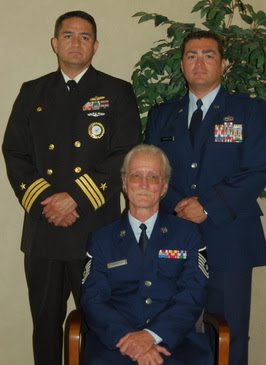"This is Huge": About 40 percent of the Air Force's F-15A-D aircraft-182 aircraft-are  grounded indefinitely until they can be invasively tested for cracks in the coming months, Air Combat Command chief Gen. John D.W. Corley said yesterday at a Pentagon press conference in which he formally announced the results of an accident board into the Nov. 2, 2007 crash of a 28-year-old F-15C. Corley had cleared 259 Eagles to fly on Wednesday, but said that the absence of 40 percent of the fleet will be a serious operational problem for some time to come. "This a big deal," Corley said. "This is huge." Corley said having such a large percentage of the fleet down "does not allow air sovereignty alert" F-15 operations over the US and means F-16s and F-15Es that have been filling in for the grounded Eagles will continue to be "pulled" from planned deployments to Iraq and Afghanistan. There is no estimate of how long it will take to inspect the grounded aircraft, even though the specific fault being sought is now known. In the meantime, training operations will be truncated, classes of new F-15 pilots will be drawn out or delayed, and the Air Force will have to make some hard choices about whether it's worth the money to fix some of the aircraft, which already average over 25 years of age.
grounded indefinitely until they can be invasively tested for cracks in the coming months, Air Combat Command chief Gen. John D.W. Corley said yesterday at a Pentagon press conference in which he formally announced the results of an accident board into the Nov. 2, 2007 crash of a 28-year-old F-15C. Corley had cleared 259 Eagles to fly on Wednesday, but said that the absence of 40 percent of the fleet will be a serious operational problem for some time to come. "This a big deal," Corley said. "This is huge." Corley said having such a large percentage of the fleet down "does not allow air sovereignty alert" F-15 operations over the US and means F-16s and F-15Es that have been filling in for the grounded Eagles will continue to be "pulled" from planned deployments to Iraq and Afghanistan. There is no estimate of how long it will take to inspect the grounded aircraft, even though the specific fault being sought is now known. In the meantime, training operations will be truncated, classes of new F-15 pilots will be drawn out or delayed, and the Air Force will have to make some hard choices about whether it's worth the money to fix some of the aircraft, which already average over 25 years of age.
-John A. Tirpak
Cracks: The culprit in the Nov. 2 F-15 crash was a crack in a longeron behind and to the right of the pilot. The longeron was supposed to have a design life of 31,000 hours, which is longer than the anticipated life of the airplane. The part was improperly made, having a thickness in some areas that was too thin by several thousandths of an inch, and years of fatigue stress have caused it to crack. Cracks similar to that on the mishap aircraft have been found on nine other F-15s, but there is no rhyme or reason to them-they did not come from a particular lot, batch of materials, and affect aircraft made from 1978 to 1985. Accident Investigation Board director Col. William Wignall said the pattern is "random." That, however, poses a dark question-what other bad parts might be lurking in the fleet? The Air Force expected to begin retiring some F-15s in the mid-1990s. Air Combat Command chief Gen. John Corley, observing the fact that his Eagles are long past retirement age, said, "100 percent of my fleet is fatigued." (AIB executive board summary; see The Document File for multiple-volume AIB report)
the right of the pilot. The longeron was supposed to have a design life of 31,000 hours, which is longer than the anticipated life of the airplane. The part was improperly made, having a thickness in some areas that was too thin by several thousandths of an inch, and years of fatigue stress have caused it to crack. Cracks similar to that on the mishap aircraft have been found on nine other F-15s, but there is no rhyme or reason to them-they did not come from a particular lot, batch of materials, and affect aircraft made from 1978 to 1985. Accident Investigation Board director Col. William Wignall said the pattern is "random." That, however, poses a dark question-what other bad parts might be lurking in the fleet? The Air Force expected to begin retiring some F-15s in the mid-1990s. Air Combat Command chief Gen. John Corley, observing the fact that his Eagles are long past retirement age, said, "100 percent of my fleet is fatigued." (AIB executive board summary; see The Document File for multiple-volume AIB report)
Lucky to be Alive: The pilot of the F-15 that crashed is "lucky to be alive," Air Combat Command boss Gen. John Corley reported. The pilot, in the second round of air combat maneuvers during the mission, was in a turn, pulling between seven and eight Gs. He realized something was wrong and relaxed back pressure, but the airplane was already coming apart, and seconds later, the nose separated from the aircraft, ultimately coming to rest about a half mile from the rest of the airplane. The canopy was ripped off the separated nose and struck the pilot's left shoulder, causing serious injury. Able to use only his right hand, he ejected from the tumbling nosecone in an inverted attitude. Upon reaching the ground, he elected to remain still until civilian rescuers reached him. The pilot performed well under the circumstances and was in no way responsible for the accident, Corley said.
Who's to Blame?: Add "vanishing paperwork" to "vanishing vendors" as another byproduct of the Air Force's operating an unprecedented old fleet. An improperly made part was to blame for the Nov. 2 crash of an F-15. But who made it? The aircraft was built in 1980 by McDonnell Douglas, and the company was to maintain the Air Force acceptance form, DD250, which it put on microfiche. Then Boeing acquired McDonnell Douglas, and there was the Paperwork Reduction Act, leading to missing papers that are making it hard to trace the provenance of the longeron in question. Gen. John Corley, head of Air Combat Command, told reporters yesterday that it's "premature" to think about liability, especially when the culprit part had been subjected to years more hard stress than it was ever expected to bear. He also thanked Boeing for being forthcoming in helping with the investigation and noted that the company itself discovered the flaw that caused the accident.
The bottom line? It ain’t pretty. Especially the “dark question-what other bad parts might be lurking in the fleet?” bits. This whole scenario just has to cast doubts…however small… in the minds of our fighter pilots about the reliability of their planes. I dunno about you, Gentle Reader, but I’d be just a little bit hesitant about pushing the envelope in a 25 to 30 year old airframe that might come apart on me. And that's only about half of this issue. As noted above, USAF is required to make some very hard decisions, very soon.
Update: Via Lex, an animation of the F-15 longeron failure...and the results.And hey! This doesn't happen a lot, but it certainly massages the ol' ego in exactly the right place when it does...





.jpg)




that first picture is SCARY!! I can imagine what the pilot thought (Oh SHIT is the first thing that comes to my mind, among other 4 letter words).
ReplyDeleteI read about this a while back. People sayin' we'll be more and more dependant on the F-18s as the F-15 fleet will have to be taken down amd rebuilt. It's wild to think how old those things are, and how much technology has advanced since we started buyin' them. And the F-16 fleet can't be too far behind. With the cost of and F-35 or F-22 being what it is, all this could end up bein' a HUGE bummer.
ReplyDeleteThat photo completely freaks me out. I'm trying not to imagine the jets still thrusting and overtaking the cockpit like a cue stick on the 8 ball.
ReplyDeleteDagnabbit, just I as was typing this, Brou gave me the 'heads up' bark and, sure enough, one of our long absent low flying fighters shot over us. By the time this digital wonder of a camera booted up, our boy was long gone over the next mesa. sigh
Jenny: Agreed, to the max. The good thing is fighter guys are SO highly trained (not to mention smart, to begin with) is that they react instinctively..and most often, correctly.
ReplyDeleteJeff: Good points, all. Problem is the F-35 is years and years away, and the F-22s can't come on line quickly enough to compensate for the loss of the F-15s. And then there's the cost, which is freakin' ginormous.
Lin: At least you're in a place where you can still see the fast-movers, if only occasionally. The last F-16 flew out of Cannon last month. I miss 'em already.
Great animation!
ReplyDeleteYou gotta be quick on the ol' eject button when that happens!
One of the criticisms I've heard leveled at this is that it "doesn't really matter" since the fighters involved are air defense only and we're only focused ops to support the ground pounders nowadays.
ReplyDeleteSetting aside the obvious myopia of that statement, something that I've found interesting is that the only reasons the F-15Es were exempted were that they were younger and heavier, both of which contribute to having a stronger structure. We could very easily be facing the same situation in a few years, especially given how long the Echoes are supposed to be sticking around. While their low level flight isn't exactly ACM, it also is definitely not the easiest on the airframe.
Also worth noting is that the A-10s are currently undergoing a $2 billion program to give them new wings to lengthen their service life.
Can you imagine the snafu that would ensue if one or both of those platforms were grounded?
Mushy sez: You gotta be quick on the ol' eject button when that happens!
ReplyDeleteThe amazing thing, to me, was that Maj. Stilwell was able to get out at all, considering he ejected with a broken shoulder.
Mike: I don't even want to think about the consequences if the A-10s and/or the "Es" were grounded. Same thing for the KC-135s...
"Same thing for the KC-135s..."
ReplyDeleteYeah, that's the understatement of the year. Already had one just up and explode down in KS during pressurization prior to a flight. Granted, it was one of the "really old" E models assigned to the Guard, but still...the clock is definitely ticking.